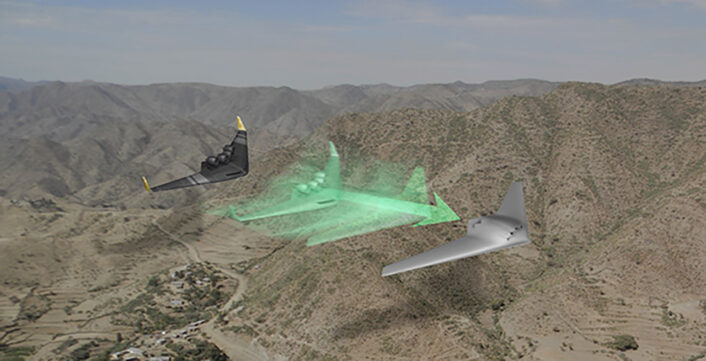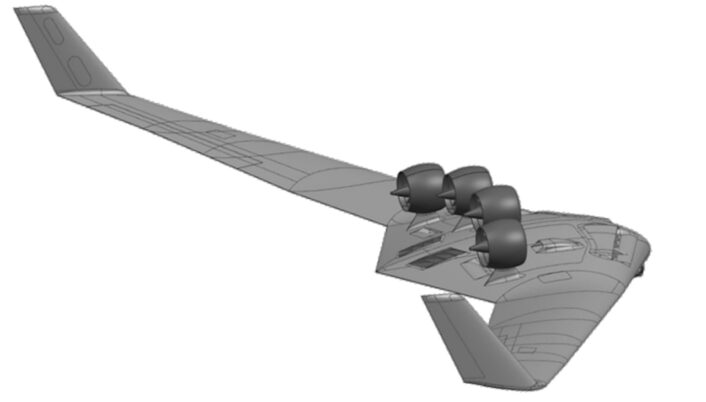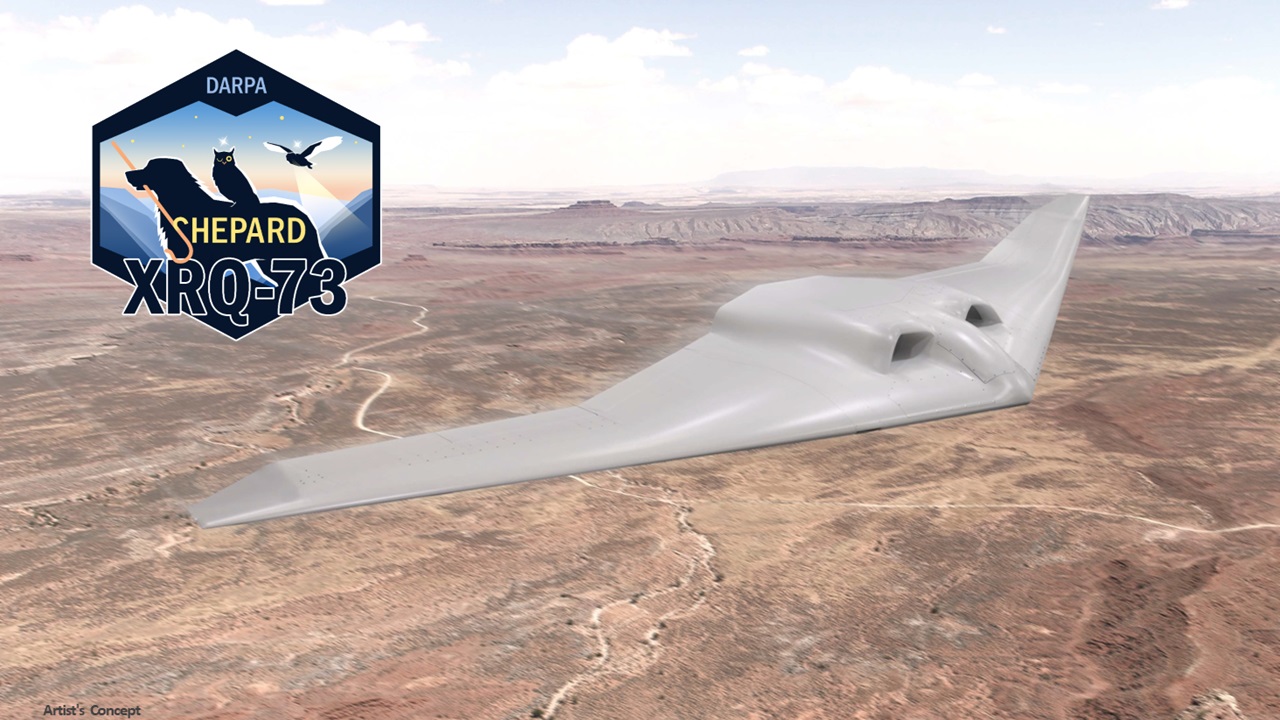The Series Hybrid Electric Propulsion AiRcraft Demonstration program aims to develop a novel long endurance unmanned aircraft, with first flight expected by the end of 2024.
The Defense Advanced Research Projects Agency (DARPA) has announced a new, innovative program, the XQ-73 Series Hybrid Electric Propulsion AiRcraft Demonstration (SHEPARD). SHEPARD is considered an “X-prime” program, leveraging the series hybrid electric architecture and some of the component technologies from the earlier Air Force Research Laboratory/Intelligence Advanced Research Projects Activity (AFRL/IARPA) Great Horned Owl (GHO) project, which resulted in the XRQ-72.
“The idea behind a DARPA X-prime program is to take emerging technologies and burn down system-level integration risks to quickly mature a new missionized long endurance aircraft design that can be fielded quickly,” said Steve Komadina, SHEPARD program manager. “The SHEPARD program is maturing a specific propulsion architecture and power class as an exemplar of potential benefits for the Department of Defense.”
The press release from DARPA names Northrop Grumman as the prime contractor for the program, with Scaled Composites being a major supplier, along with Cornerstone Research Group, Brayton Energy, PC Krause and Associates and EaglePicher Technologies. The AFRL and the Office of Naval Research (ONR) are also contributing to the effort.
The XRQ-73 SHEPARD
In the page dedicated to SHEPARD, the program is described as an option of the GHO contract, expected to take emerging technologies and burn down system-level integration risks to provide a minimum viable product to meet an urgent operational need. In fact, the stated goal is to quickly mature a new mission-focused aircraft design that can be fielded with the objective of first flight in 20 months.
DARPA did not release many details, other than mentioning that XRQ-73 aircraft will be a Group 3 Unmanned Aerial System (UAS) weighing approximately 1,250 pounds (567 kg), with the first flight expected by the end of the year. The artwork released with the news shows the now common stealthy flying wing design, with tapered and clipped wingtips and two air inlets on the upper side of the fuselage, as well as a fairing between the inlets, possibly related to a payload.
While no details are available regarding performance specification, the UAS classification adopted by the U.S. Department of Defense allows to get at least an idea of the range in which they could fall. In fact, Group 3 UAS have a Maximum Take Off Weight between 55 and 1,320 lb, normal operating altitudes between 3,500 ft and FL180 and speed between 100 and 250 kt. Examples of Group 3 UAS are the RQ-7 Shadow and the RQ-21 Blackjack.

The only detail currently available about the powerplant is its hybrid electric nature. This type of propulsion is getting increasing attention in the aerospace sector as it allows quieter flights, fuel savings and fewer emissions. These characteristics are ideal also for a UAS devoted to Intelligence, Surveillance and Reconnaissance (ISR) roles, as it can result in longer endurance and reduced acoustic and visual detection risk.
Multiple hybrid configurations are currently being developed, with the parallel hybrid and turboelectric being considered as near-term propulsion options. The XRQ-72 used a series hybrid electric architecture, which DARPA says will be leveraged by SHEPARD. This architecture usually combines a fuel tank, a gas turbine, an electric generator and a battery in series, which then power an electric motor.
The XRQ-72 GHO
The development of the original XRQ-72, resulted from the Great Horned Owl program, started more than a decade ago as an experimental ultra-quiet, high-efficiency reconnaissance UAS. The prime contractor was Scaled Composites which, as we mentioned, is a major supplier for the SHEPARD program.
“For many ISR applications, the acoustic signature of the UAV alerts the adversary to the UAV’s presence and can interfere with the mission,” IARPA explained in 2011 when the program was first disclosed. “Battery powered UAVs are very quiet but lack endurance and payload capability. Better, more efficient, quiet power sources and propulsion techniques are needed to build next generation UAVs for ISR mission applications.”
The XRQ-72 was smaller than the current XRQ-73, with a similar planform but some noticeable differences. Among them were winglets, less prominent split air inlets and externally mounted ducted fans. Detailed schematics obtained by The War Zone showed also the internal arrangement and revealed the presence of an Electro-Optical payload. The latter could be also present on the XRQ-73, but not visible in the artwork due to perspective.

The UAS’ schematics obtained by The War Zone via a Freedom Of Information Act showed a wingspan of 30 ft, an overall length of 11.2 ft measured from the nose to the ends of the wingtips, and an height of 4 ft, with a reported weight of 300-400 lb. The current XRQ-73 is expected to be substantially larger, although the dimensions are not known, apart from the weight.
As we mentioned, the XRQ-72 used a series hybrid electric propulsion system. Specifically, the powerplant was based on two electric generators fueled by either gasoline or diesel, which were in turn used to power four ducted fans installed on the top of the fuselage. Although DARPA mentioned that they will leverage the existing powerplant, it is not clear how many motors will be installed on the XRQ-73.
IARPA also mentioned that the first phase of the GHO program focused on fuel-to-electricity devices using an advanced combustion engine directly coupled to alternator/generator concepts and, as a second option, electricity-to-thrust devices utilizing innovative electric motor driven propulsor systems.













